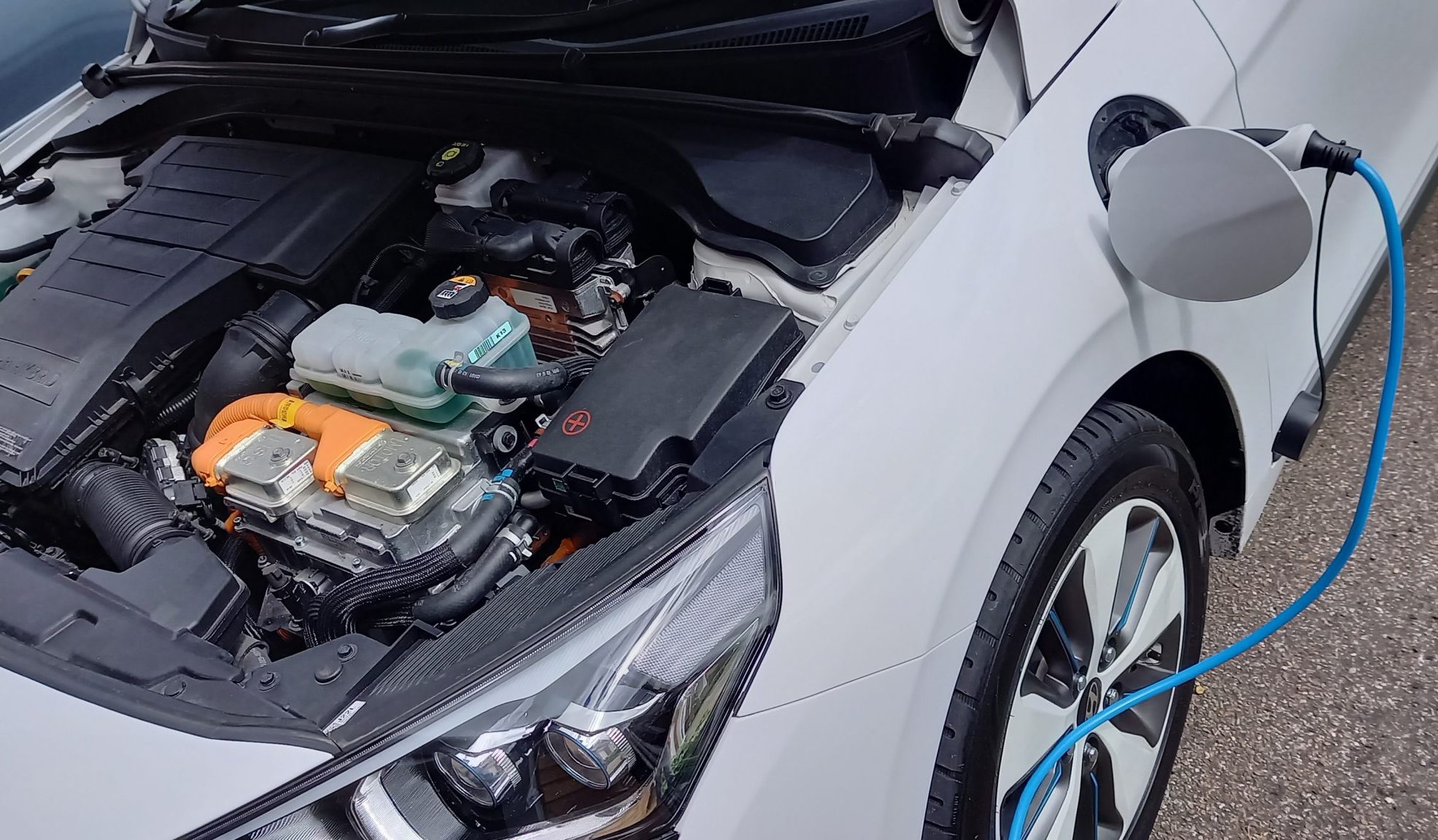Date of post: 23rd October 2023
The different charging levels at which Electric Vehicles (EVs) and Plug-in Hybrid Electric Vehicles (PHEVs) can be charged are often not properly understood. The aim of this blog is to explain the charging methods available for modern electric and plug-in hybrid electric vehicles and the various terminologies used.
External charging of the high voltage battery on EVs and PHEVs is carried out using Electric Vehicle Supply Equipment, abbreviated EVSE.
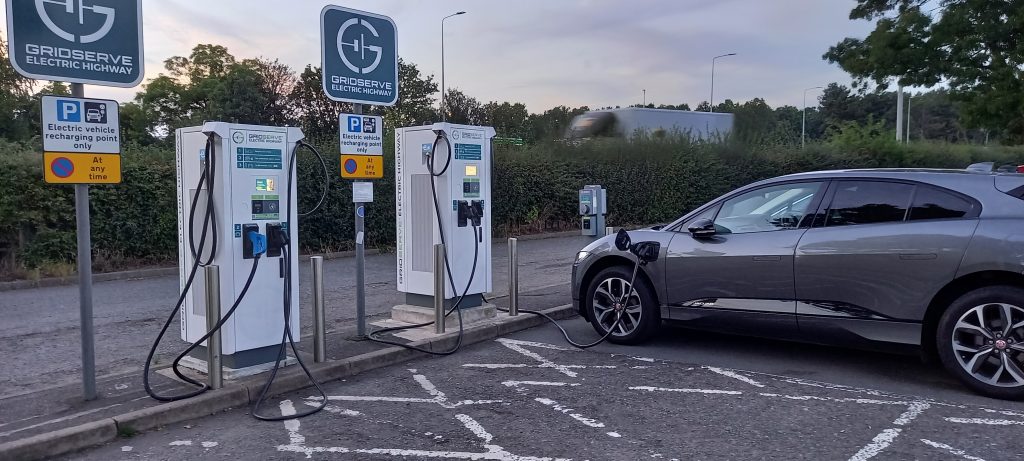
The EVSE supplies either AC or DC charge to the vehicle depending upon the method of charging and type of EVSE used.
Four methods of charging are possible. These are:
i) Slow charging (sometimes referred to as trickle charging)
ii) Fast charging (including fast DC charging)
iii) Rapid charging (mainly Rapid DC but also Rapid AC)
iv) Ultra-Rapid DC charging
For slow and fast charging, the EVSE supplies AC charge to the vehicle which needs an
on-board charger to convert the AC to DC and send the DC charge to the vehicle’s high voltage battery. For Rapid DC and Ultra-Rapid DC charging, the EVSE supplies DC charge directly to the battery.
The method of charging determines how quickly a charger can recharge
the vehicle’s high voltage battery.
Other factors such as the battery’s temperature also affect the charge rate and
time it takes to charge the battery.
Charging methods define a specific charging level with respect to charge voltage, charge current and kilo Watt output that the EVSE supplies to the vehicle. Different types of EVSE and charging cable connectors are used for each charging level.
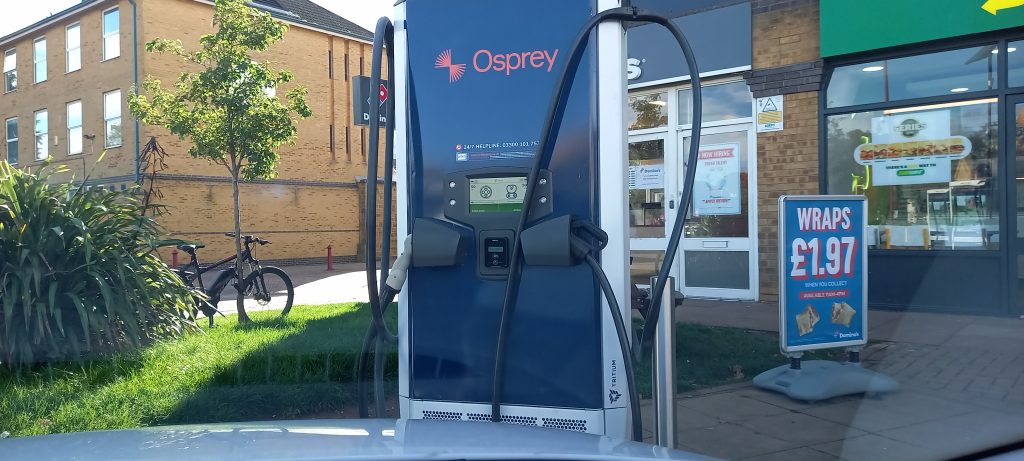
Also, the different charger types operate at different amperage ratings from the mains electricity supply. The amps rating of the charger is its operating amperage, not what the charger supplies to the vehicle.
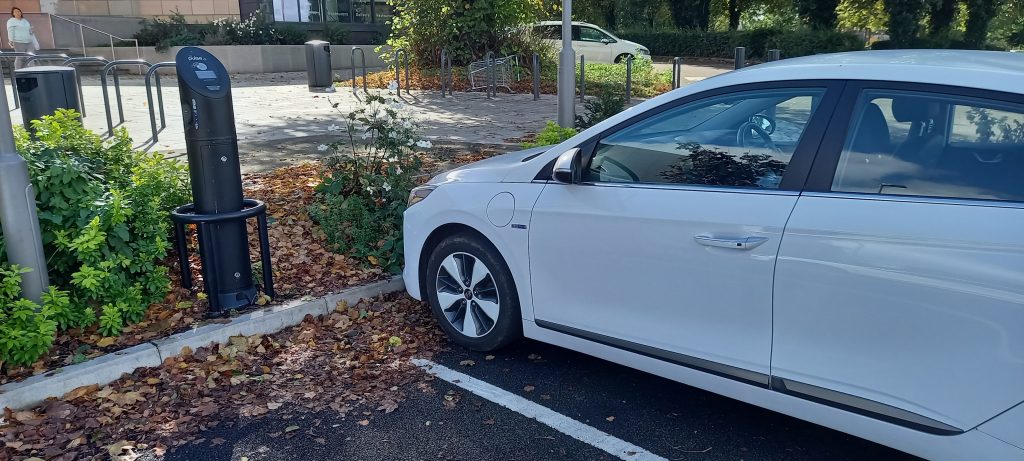
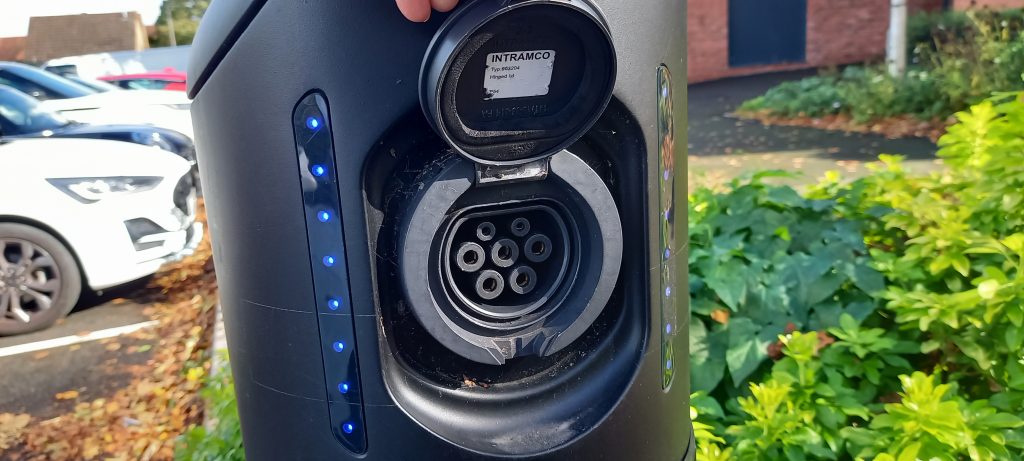
At times, the different charging levels can be confusing, especially if the incorrect term is used for a particular charge method. For example, Rapid DC is often wrongly referred to as fast charging.
Fast Charging and Rapid DC charging are two completely different levels of charging.
Not all electric vehicles can accept Rapid DC and Ultra-Rapid DC charging.
EVSE charge output is rated in kilo Watts, abbreviated kW. The charge voltage and current varies depending upon the charging level, type of EVSE used (slow charger, fast charger etc.) and the rating of the vehicle’s high voltage battery.
It also depends upon the vehicle make and type as to what level of charging is possible. This is determined by the following three main factors:
i) What level of charge (in kW) the vehicle can accept
ii) What level of charge (also in kW) the EVSE can supply
iii) The type of charging socket connector fitted to the vehicle
Item iii) above is a very important factor. A different charge cable plug and vehicle charge socket connector type are needed for example to supply Rapid DC and Ultra-Rapid DC charging than the types used for trickle and fast charging.
EV and PHEV charging – what charge level for what car?
When charging the high voltage battery of an electric or plug-in hybrid electric vehicle, the
following two items need to be understood:
i) The type of external charger (EVSE) used and its available charge output in kW.
ii) The vehicle’s on-board charger and its maximum rated output capability in kW.
The vehicle’s battery can only charge at the maximum rated output
of its on-board charger.
Most PHEVs can only accept slow charging. PHEVs usually have a lower capacity high voltage battery than EVs and their on-board charger supplies a lower kW output to the battery.
One exception is the Mitsubishi Outlander PHEV which can accept a Rapid DC charge using the Japanese standard CHAdeMO charging connector. Slow AC charging is via a Type 1 connector.
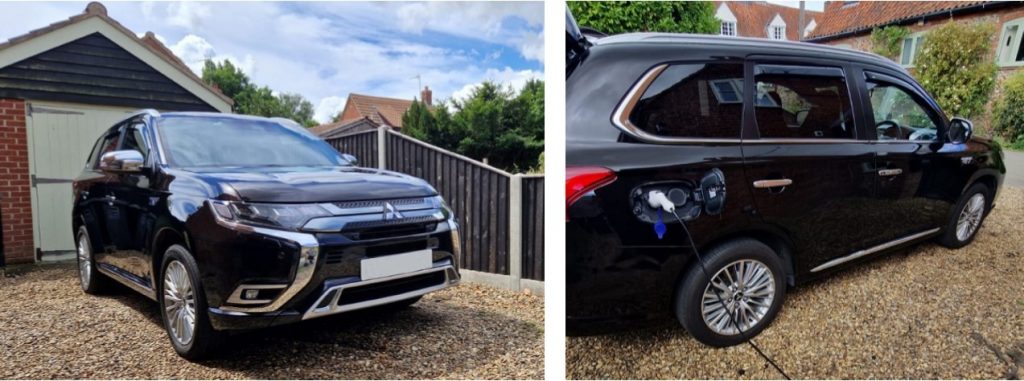
and Rapid DC charging via CHAdeMO connector
CHAdeMO is still available on some new Japanese electric vehicle models being introduced into the UK, for example the Lexus UX300e and also the Nissan Leaf, but this is not common and not the adopted standard throughout the UK and Europe.
EVs accept higher slow and fast charging rates and nearly all modern EVs can also accept Rapid DC charging as standard. They have a higher kW output on-board charger than PHEVs, typically from around 6.6kW to as high as 22kW depending upon the type and model year of the vehicle. This enables EVs to charge more quickly than PHEVs but charge rate is still limited to the maximum kW output that the vehicle’s on-board charger can deliver to the battery.
Some small EVs cannot accept Rapid DC charging, only fast charging up to 22kW. One example is the pre 2019 Renault ZOE which has a Type 2 charging socket only and no Rapid DC charging capability. The later Renault ZOE R110 ZE50, available from 2019 to 2022 and also the newer 2023 ZOE model variants have an optional Rapid DC charge capability. This feature needs to be selected by the customer when ordering the vehicle from new.
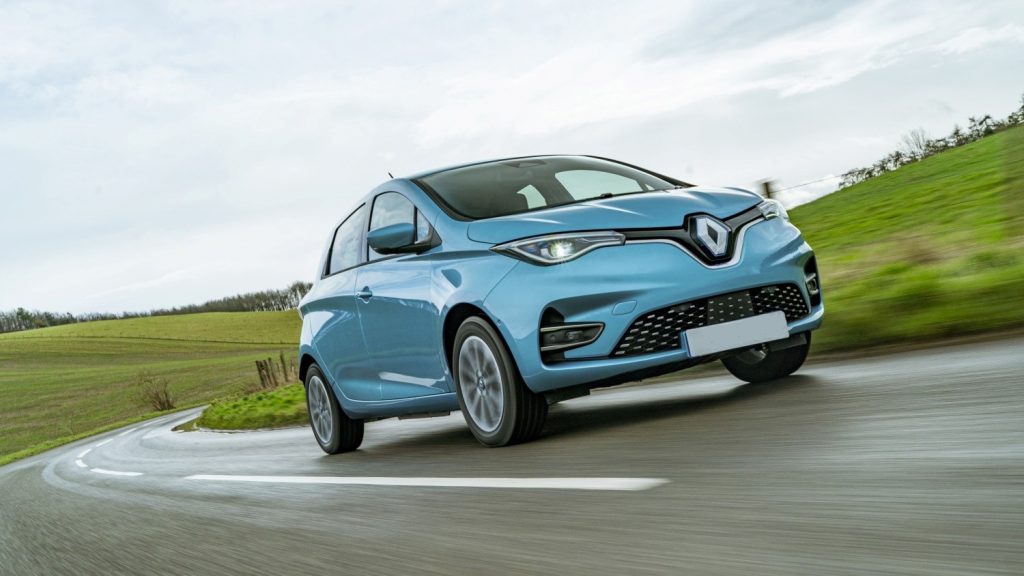

Note: no Rapid DC charging socket
At the time of writing (October 2023), some very high kW output EVSE chargers capable of supplying Ultra-Rapid DC charge at up to 350kW, are now widely available at many public charging stations such as motorway services, fuel filling stations and town shopping centre car parks.
Ultra-Rapid DC charging makes possible very short charging times for some of the latest EV models, with charging times being reduced to as little as ten to fifteen minutes to bring the high voltage battery state of charge up from around 20% to 80% charge. The reduction in battery charging times and level of charge acceptance of modern electric vehicles is a constantly evolving technology.
On-board chargers fitted to many older model EVs supply charge received from the EVSE
to the vehicle’s high voltage battery at a rated output of between 6kW – 7kW. Many newer
vehicles now have an 11kW output on-board charger and a few are fitted with 22kW
on-board chargers. A 7kW charge output is regarded as a fast charge, albeit at the lower
end of the fast charging scale.
Slow charging (3kW to 6.6kW AC)
Slow charging (sometimes also referred to as trickle charging) is the lowest and slowest level of charging and defines charging levels that are below 7kW.
Slow charging uses a single-phase mains AC voltage supply to charge the vehicle’s high voltage battery. It covers charging at home using a slow charger – usually the one supplied with the vehicle – plugged into a domestic mains supply socket via a 3 pin 13 Amp (UK) plug connector.
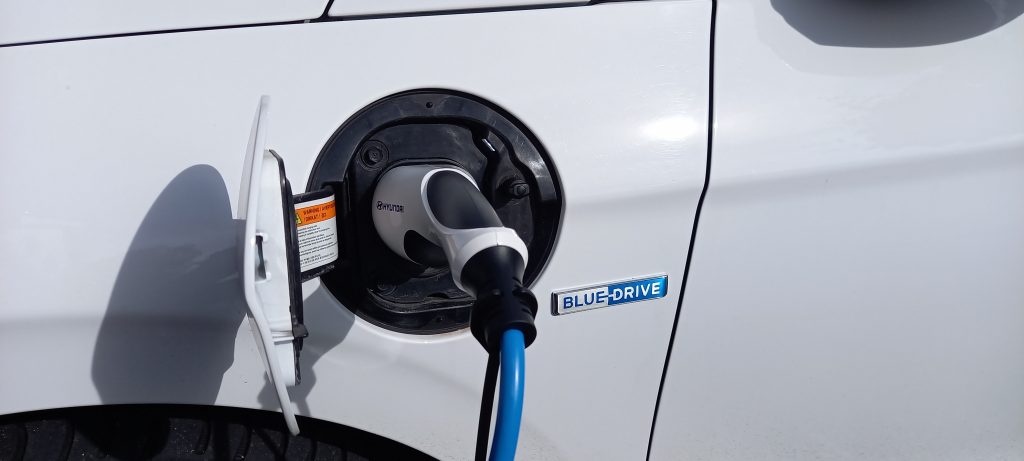
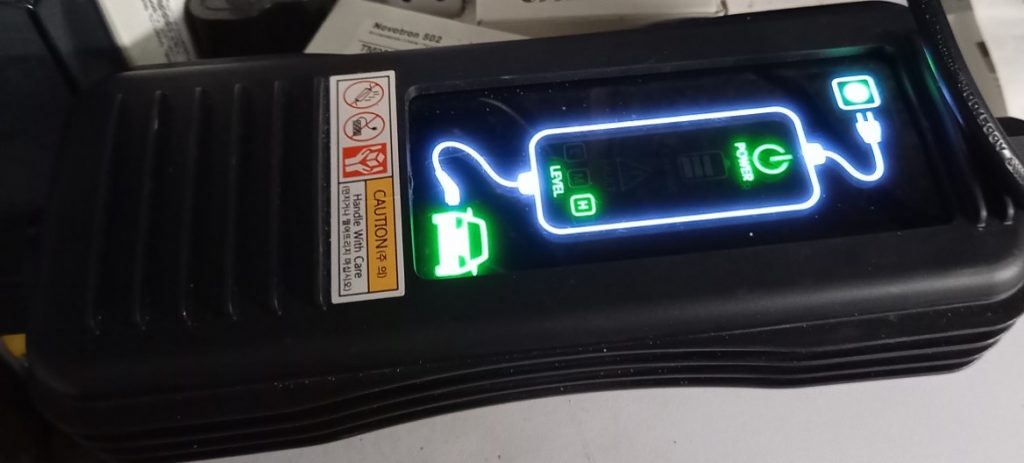
The battery can only accept DC charge. AC charge current from the external charger is converted to DC by the vehicle’s on-board charger.
Slow charger ratings of 3kW, 3.6kW and 6.6kW are very common. Domestic mains supplied slow charging units usually deliver charge output to the vehicle from 2.4kW – 2.7kW with the charger receiving a current supply from the mains up to a maximum of 10 Amps at 230 volts AC.
Public slow charging stations typically deliver around 3.6kW – 3.7kW. Some 5kW public slow charging stations exist, often incorporated into street lamps around towns and cities. Many early EVs have on-board chargers rated from 6kW – 6.6kW output which is a slow charge capability.
Slow charging is ideal for overnight charging at home and enables motorists to take advantage of cheaper electricity rates during the night offered by some energy companies.
It can take 6 – 12 hours or more for a slow charger to charge the high voltage battery of a small EV at around 6.6kW charge output. Larger EVs can take much longer – up to 48 hours or more to fully recharge. The average PHEV can take 2 – 4 hours or more to fully recharge its high voltage battery.
There is no definitive time frame to charge an EV or PHEV high voltage battery. Many
factors determine how long it actually takes to charge the battery.
Also included in this charging category is mains charging at home or the office via a specialist installed slow charging unit, mounted for example on the outside wall of the house. However, most of these tend to be fast chargers with outputs starting from 7kW – 7.4kW.
In the UK and Europe, domestic mains electricity supply (i.e. that supplied to the home) is single-phase AC, rated at 230 volts and 13 Amps maximum at the three pin wall socket.
Slow charging connector types
There are four slow charging connector types:
i) Type 2 (3kW / 6kW AC). Mennekes connector – now standard for slow and fast charging.
ii) Type 1 (3kW / 6kW AC). Earlier vehicles, e.g. Vauxhall Ampera. Mainly early US market.
iii) Commando (3kW / 6kW AC)
iv) Three-pin domestic plug socket (3kW AC)
In the UK and EU, the Type 2 connector is the standard connector for slow charging and also fast AC charging.

Fast charging (7kw to 22kW AC and 22kW DC)
This charging level covers charge rates from 7kW to 22kW AC and 22kW DC and includes the Tesla Destination charge network – previously 11kW but now up to 22kW. Higher output fast chargers (11kW to 22kW) need a three-phase 400 volt AC mains voltage supply. Lower output 7kW fast chargers, particularly specialist installed home chargers use a single-phase AC mains supply.
22kW DC fast chargers are also available that supply DC charge via a CCS Type 2 or CHAdeMO charging plug connector. These chargers also require a three-phase 400 volt AC mains supply.
Fast AC chargers can charge the high voltage battery of a small EV in around 3 – 6 hours depending upon the vehicle and its battery size. Vehicles with larger batteries take longer. Also, a larger battery in a low state of charge will take longer to fully recharge up to 100%.
EVSE AC fast chargers are often located in public areas such as car parks and town high streets. They may be a stand-alone unit, wall mounted or integrated into a street lamp for example.
Many people opt to have a fast charger professionally installed at their home. The most common type of home fast charger is rated at 7kW – 7.4kW which is the maximum output normally possible for domestic single-phase AC mains voltage supply to UK homes. This is due to the lower power handling capability (i.e. single-phase) of mains supply cabling infrastructure to residential properties.
Higher output 11kW and 22kW home AC fast chargers are also available but they will require a three-phase mains supply to be installed at the property which will be expensive and may be impracticable for many homes.
Single-phase AC fast chargers are normally rated at 32 Amps for a 7kW – 7.4kW output charger via a 230 volt mains supply. 11kW chargers require a three-phase 400 volt AC supply rated at 16 Amps. A 22kW three-phase AC charger is normally rated at 32 Amps per phase via a 400 volt supply, with 22kW DC fast chargers also being rated at 32 Amps.
Only a few EVs can accept 22kW AC fast charging. Until around 2020 / 2021, most EVs have an on-board charger rated at around 7kW charging output.
Most notable of those vehicles that can accept 22kW fast AC charging is the Renault ZOE. Some other vehicles that can accept 22kW charging include:
- BMW i3
- Tesla Models S and X
- Nissan Leaf e+
From around 2021, many new model EV variants are now being equipped with an 11kW
on-board charger as standard.
Remember: the vehicle’s high voltage battery can only charge at the maximum
rated output of it’s on-board charger.
There are five fast charger connector types:
i) Type 2 (Mennekes connector, 7kW, 11kW and 22kW AC)
ii) Type 1 (7kW AC)
iii) Commando (7kW / 22kW AC)
iv) CCS and CHAdeMO connector types used for 22kW DC fast chargers
The Type 2 connector is referred to as a Mennekes connector type in reference to the German company Mennekes Elektrotechnik GmbH & Co. KG that originated the design. Type 2 Mennekes connectors support single-phase and three-phase AC charging. They are the standard type used in the UK and Europe for slow and fast charging.
Rapid DC / AC and Ultra-Rapid DC charging
These two methods of charging supply high output, mainly DC charging current directly to the vehicle’s high voltage battery. For Rapid DC charging, the vehicle’s on-board charger is not involved in the conversion of AC charge current to DC as this task is performed by the EVSE internally which then supplies the DC charge directly to the vehicle’s battery.
Rapid and Ultra-Rapid charging is designed to supply a high level of charge in a very short time frame. In doing so, this enables motorists to either recharge or top up the vehicle’s battery to around 80% during a short stop, for example at a motorway service area.
Rapid charging
This provides DC charging at up to 50kW on one of two connector types and also AC charging at 43kW via a Type 2 connector. Both DC and AC Rapid charging can charge an EV battery to around 80% capacity in approximately 30 – 45 minutes.
There are two Rapid DC charging connector types:
i) Combined Charging System, abbreviated CCS (50kW DC)
ii) CHAdeMO (50kW DC)
One connector type is used for Rapid AC charging:
i) Type 2 (43kW AC)
In the UK and Europe, the adopted standard charging connector is the Combined Charging System connector, abbreviated CCS. This connector incorporates a Type 2 Mennekes connector in its upper section for Slow and Fast AC charging and two extra terminals in its lower section for Rapid DC (and Ultra-Rapid DC) charging.
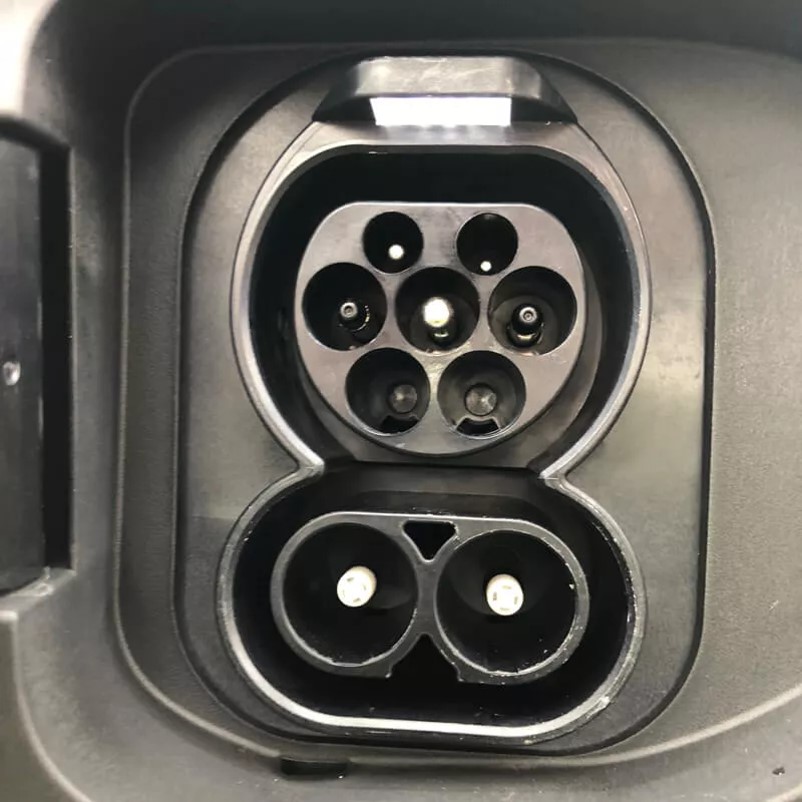
The majority of new vehicles being sold in the UK and Europe are no longer being fitted with the CHAdeMO Rapid DC charging connector. An example of an EV that still does is one of the best selling electric vehicles in the world – the Nissan Leaf.
Pre 2018 Nissan Leaf model variants had a CHAdeMO connector for Rapid DC charging and a Type 1 connector for Slow and Fast AC charging.
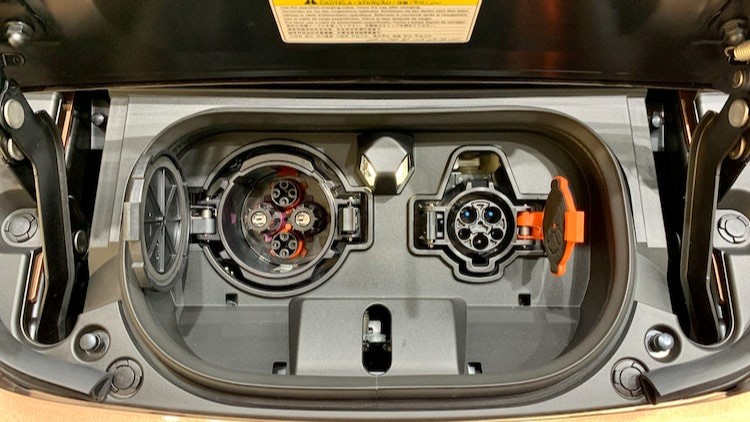
From 2018, the Nissan Leaf adopted the Type 2 connector for Slow and Fast AC charging but has retained the CHAdeMO connector for Rapid DC charging.
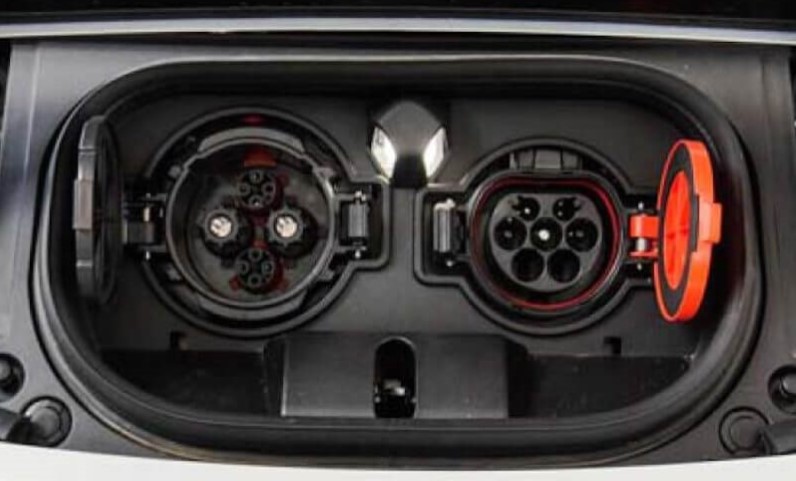
Additional note: AC Rapid charging at 43kW
Possibly the only vehicle that can Rapid charge at 43kW AC via a Type 2 connector is the pre 2015 Renault ZOE Q210 model variant. This vehicle uses Renault’s patented Chameleon™ on-board charger. Also, this charge rate is only possible if the EVSE charger can supply 43kW AC charge via a Type 2 connector.
Most EVSE Rapid chargers are not now equipped with 43kW Rapid AC charging capability, only Rapid DC.
Ultra-Rapid DC charging
This charging method delivers Ultra-Rapid DC charge above 50kW up to 350kW output. Typical Ultra-Rapid DC charge ratings are: 100kW, 120kW, 150kW or as high as 350kW.
There are two main Rapid DC charger connector types:
i) Combined Charging System CCS (50kW – 350kW)
ii) CHAdeMO (50kW – 100kW)


Tesla’s Supercharger network now delivers Ultra-Rapid DC charging at up to 250kW using either a CCS Type 2 or Tesla’s own adapted Type 2 connector for their Model S and Model X cars.
Rapid chargers can be found at motorway service areas and many other locations such as fuel filling stations, fast food restaurant car parks, hotels and town and retail centre shopping car parks. Typically, these locations are where motorists will be visiting for only a short time.
Connecting the vehicle to a charger
The process of connecting and disconnecting charging equipment to and from the vehicle is straightforward and inherently a safe procedure.
Due to the communication protocols that take place between the vehicle’s on-board charger and the EVSE, no high voltage charge is present at either the EVSE charging cable plug connector or the vehicle’s charging socket until such time as the charging cable plug is fully inserted into the vehicle’s charging socket and the vehicle has initiated the charge.
If the vehicle and the charging equipment are working correctly and not damaged in any way, then there should be almost no risk whatsoever to the motorist whilst using EVSE equipment to charge their electric vehicle’s high voltage battery.
When using charging equipment, there are a few things that motorists should to be aware of and the most important of these is familiarisation with how to connect and disconnect the charger to and from the vehicle. The following general guidelines apply:
i) Refer to the owners manual for the vehicle to familiarise with the charger cable
connection and disconnection procedure (usually for example, the vehicle should be
switched off before charging commences).
ii) Familiarise with the charging indicator lamps on the vehicle’s dashboard.
iii) Connect the charger to the mains supply (trickle charger) or charging cable to the EVSE (untethered cable) first, then connect the charge cable plug connector to the vehicle’s
charge socket.
Terminating the charge
Charging of the vehicle’s high voltage battery can be terminated at any time. Usually, unlocking the vehicle by pressing the unlock button on the vehicle’s key fob will terminate the charging process and release the charge cable’s locking mechanism to enable the cable plug to be removed from the charge socket.
Always refer to the owners manual for the specific vehicle to familiarise with the procedure
for connecting and disconnecting the charging cable.
Want to know more?
This blog is an extract from Section 5: Charging the High Voltage Battery of the course notes for AK Automotive’s Electric & Hybrid Electric Vehicle Systems course.
Electric & Hybrid Electric Vehicle Systems is a two day course from AK Automotive. It is aimed at vehicle mechanics, technicians and apprentices working in the motor industry who would like to learn about electric and hybrid electric vehicle high voltage systems.
Section 5 of the course notes goes into more detail and covers all aspects of charging the high voltage battery of modern EVs and PHEVs, including the communication protocols between the EVSE and the vehicle’s on-board charger, scan tool diagnostics and taking test measurements on the high voltage charging system.
The course comprises a range of hands-on workshop based sessions on live road going vehicles supported by classroom technical sessions.
Course content includes electrical health and safety, PPE, high voltage awareness, making the vehicle safe, an explanation of the different high voltage systems and how they work, evaluation of system parameters using a diagnostic scan tool and how to safely carry out basic test measurements of high voltage systems and components using appropriate test equipment such as CAT IV digital multi meter and Megger Meter high voltage insulation tester.
The course is available for on-site training at customer’s premises. For further information about the course, contact Tony Kitchen at AK Automotive
Telephone: 00 44 (0)7484 831 015
E-mail: tony@akautomotivetraining.co.uk

© AK Automotive 2023
